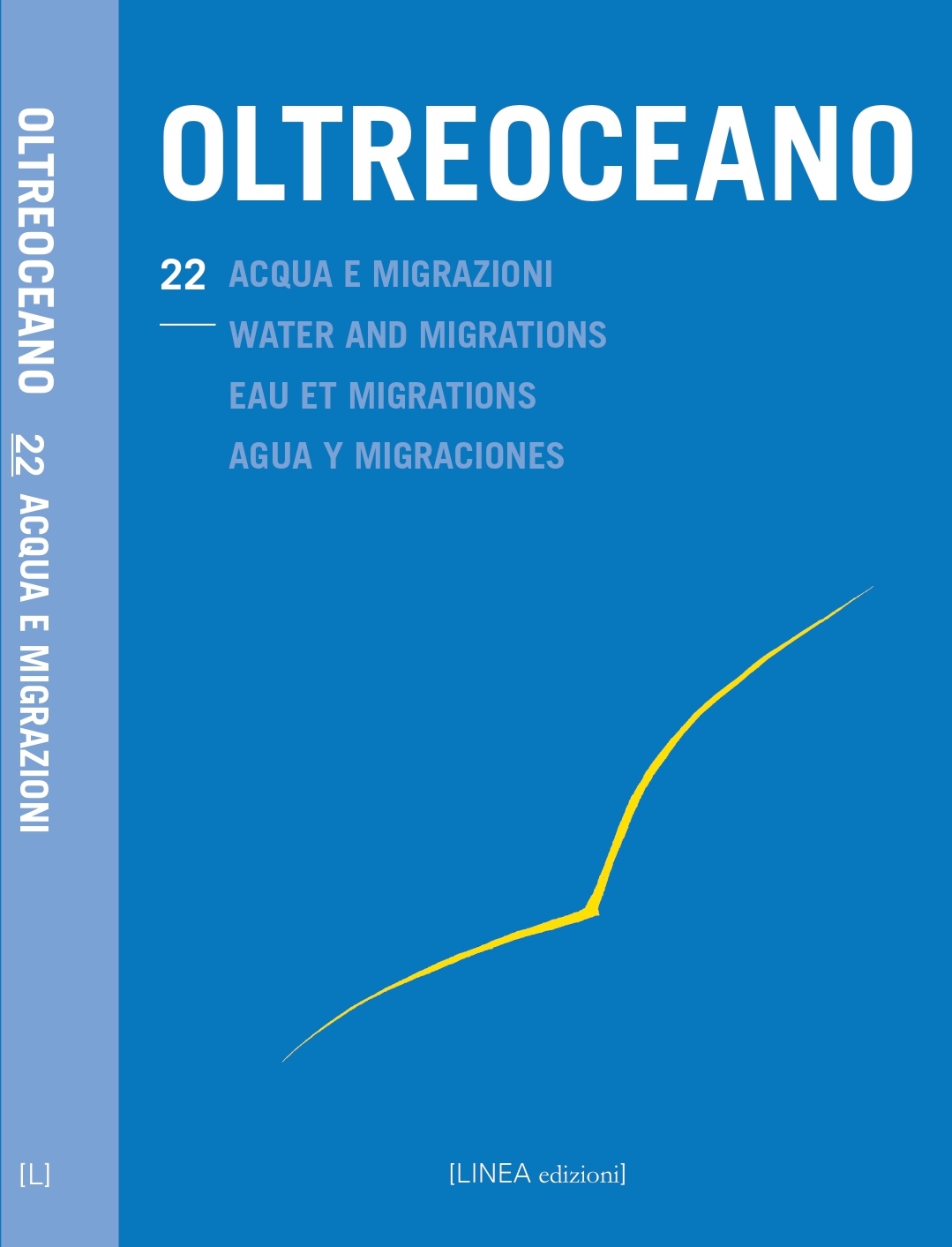North Atlantic: The Most Dangerous Water in the World
DOI:
https://doi.org/10.53154/Oltreoceano78Keywords:
Atlantic, Jesuits, Plagues, Martyrs, New FranceAbstract
During the twentieth century the North Atlantic became the most dangerous water on the planet. Hundreds of ships were sunk and thousands of men and women died in that cold grey water. We can begin with the Titanic disaster of 1912, The Empress of Ireland collision of 1914, the Lusitania torpedoed in 1915, and the Mont Blanc explosion of 1917. During World War II numerous ships and men were lost to the attacks of U-Boats. It is ironic then that this dangerous crossing is also the major route for the mass migration to North America and the search for a new life after World War II. One of these immigration ships, the Andrea Doria, collided with the MS Stockholm and sank in 1956. Long before the modern period of history, the North Atlantic brought disease and death to the Indigenous peoples of the New World. We will examine The Jesuit Relations as the record of all the interactions between the Indigenous peoples and the French colonists in the 1600s.The settlement of Quebec was founded in 1608 by the French explorer Samuel de Champlain who crossed the Atlantic approximately twenty times between France and North America. In the years 1634-1640 a major epidemic of smallpox and influenza killed thousands of Indigenous Wyandot people in New France and in the new English colonies to the south. Champlain died of an apparent stroke in 1635, but he could also have been infected with one of these diseases. In volume 13 of the Relations for year 1637 Père le Mercier records more than 130 references to fever, sickness, contagion, disease, epidemic, plague, dead children and bleeding. For the native populations of North America, the Atlantic Ocean brought destruction to their civilization and changed their history. What do the eyewitness accounts of the Jesuit missionaries tell us about human behaviour in crises of disease and death and possibly the search for martyrdom?
Downloads
References
Bressani, F.G. (1899): Breve Relatione d’Alcune Missoni dei PP della Compagnia di Giesu nella Nuova Francia. M. Sifton Pepper (Trans.). In R.G. Thwaites (Ed.), The Jesuit Relations and Allied Documents (Vol. 38, 39, 40). Cleveland: The Burrows Brothers.
Cro, S. (1980-1981): The Original Letter of Father Bressani Written from Fort Orange in 1644. Canadian Journal of Italian Studies 4, 1-2, pp. 26-67.
De l’Incarnation, M. (1967): Word from New France: The Selected Letters of Marie de l’Incarnation. J. Marshall (Trans. & Ed.). Toronto: Oxford University Press.
De l’Incarnation, M. (1971): Correspondence 1639-1671. Dom Guy-Marie Oury (Novelle Éd.). Sarthe, France: Abbaye Saint-Pierre de Salesmes.
Dimaline, C. (2017): The Marrow Thieves. Toronto: Cormorant Books.
Dunn, M. (2016): Neither One Thing nor the Other: Discursive Polyvalence and the Representation of Amerindian Women in the Jesuit Relations. Journal of Jesuit Studies 3, pp. 179-196.
Dunn, M. (2018): Bedside Manners: Sickness and the Jesuit Mission in Early Modern New France. Journal of Jesuit Studies 5, pp. 567-585.
Ferraro, A. (2014): Les Récits personnels de Marie de l’Incarnation ou de l’écriture autobiographoique détournée. Francofonia: Studi e ricerche sulle letterature di lingua francese 66, pp. 177-191.
Frye, N. (1971): The Bush Garden: Essays on the Canadian Imagination. Toronto: House of Anansi.
Goddard, P.A. (1998): Converting the Sauvage: Jesuit and Montagnais in Seventeenth-Century New France. The Catholic Historical Review 84, 2, pp. 219-239.
Greer, A. (2000): Colonial Saints: Gender, Race and Hagiography in New France. The William and Mary Quarterly, Third Series, 57, 2, pp. 323-348.
Mazan, R.M. (2011): Analyzing Epidemics in New France: The Measles Epidemic of 1714-1715. Electronic Thesis and Dissertation Repository, 141. Ph.D. Thesis in Sociology. The University of Western Ontario, Canada.
McShea, B. (2019): Apostles of Empire: The Jesuits and New France. Lincoln: University of Nebraska Press.
Pivato, J. (2009): An Italian Jesuit in Canada: Faith and Imagination in Bressani’s Breve Relatione of 1653. In O. Zorzi Pugliese & E.M. Kavaler (Eds.), Faith and Fantasy in the Renaissance (pp.161-169). Toronto: Centre for Reformation and Renaissance Studies.
Podruchny, C. & Labelle, L.M. (2011): Jean de Brébeuf and the Wendat Voices of Seventeenth-Century New France. Renaissance and Reformation 34, 1-2, pp. 97-126.
Richardson, J. (1991): Wacousta, or A Tale of Canada. Toronto: New Canadian Library.
Vimont, B. Ed. (1858): Relations des Jésuites contenant ce qui s’est passé de plus remarquable dans les missions des pères de la Comagnie de Jésus dans la Nouvelle France (1642-45). Quebec: Augustin Coté.
Worcester, T. (2005): Defensive Discourse: Jesuits on Disease in Seventeenth-Century New France. French Colonial History 6, pp. 1-15.
Downloads
Published
How to Cite
Issue
Section
License

This work is licensed under a Creative Commons Attribution-NonCommercial-ShareAlike 4.0 International License.
The authors undertake to comply with the following conditions, which are considered accepted at the time of submission of their contributions.
The sending of a text implies that it is unpublished and not submitted to be published elsewhere.
1. If accepted, the author shall confer on the publisher the right to publish and distribute it both in paper form and in the online electronic edition. The published articles will be downloadable and made available in open access.
2. Provided that it correctly indicates that the first publication took place in the journal Oltreoceano. Rivista sulle migrazioni the author has the right to: a) reproduce the article in separate extracts or collected in a volume; b) publish the article on their personal website or teaching site provided that these sites are of a non-commercial nature; c) deposit the article in online archives of a non-commercial nature, linked to the institution they belong to or as part of projects for the non-commercial dissemination and open access of scientific works.
The use of contributions by third parties, for commercial or otherwise unauthorized purposes, is not allowed. The publisher declines all responsibility for the unauthorized use of the material published in the journal.












